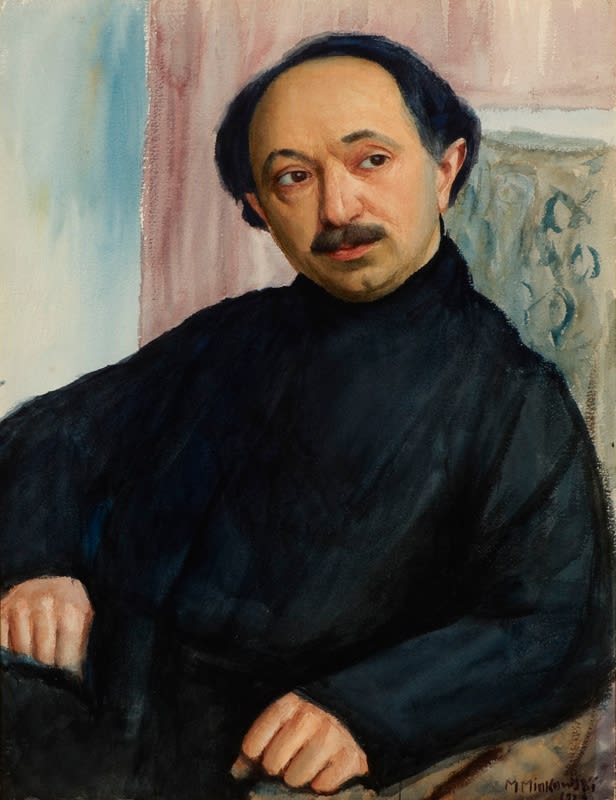Writer, sculptor, jeweller, founder of the antique jewellery shop Cameo Corner, and dealer in cameos and antique jewellery, Mosheh Oved (aka Edward Goodack or Edward Good) was born into a Jewish family in Skepe, then within the Russian Empire (now Poland) in 1885. In 1903 he immigrated to England and settled in London’s East End, where he initially worked as a watchmaker. After establishing Cameo Corner, located first at 1 New Oxford Street, and after the Second World War in Museum Street, he also designed and made his own jewellery and metalwork. In the 1920s Oved met his future wife, jewellery designer Gwendoline Ethel Rendell (1900–1983); largely self-taught, she had worked for the Arts and Crafts jeweller John Paul Cooper, and by 1924 had her own workshop in Doughty Street under the name of Miss Rendle. She converted to Judaism and took the name Sah Oved, producing radical jewellery in the interwar and postwar years.
Oved was a founding member of the Ben Uri Society in 1915 and made a gold and diamond brooch to Lazar Berson’s design for Ben Uri in 1916. He was a great supporter of Yiddish culture, holding an honorary office within Ben Uri from its inception until 1956, and always maintaining that its main goal should be to collect pictures and open a gallery. The collection in these years was influenced by his taste as he helped to fund and facilitate the acquisition of a number of important early works by artists including Simeon Solomon, Jacob Kramer, David Bomberg and Samuel Hirszenberg. In 1924 his portrait was painted by fellow Polish artist Maurice Minkowski and Oved presented it to the Ben Uri Collection in 1929.
Oved collected 124 autobiographical stories and short tales in his book Visions and Jewels (1925), and included anecdotes about Max Nordau, Sholem Asch and Jacob Epstein, among many others. His other volume, The Book of Affinity (1933) was a deluxe production with original colour lithographs by Epstein (Oved presented two busts by Epstein to Ben Uri in 1947).
From 1927 to 1937 the Oveds lived in Jerusalem, afterwards returning to London. According to anecdote, it was while sheltering in the basement of Cameo Corner during the Blitz, that Oved first began casting in wax animal rings designed by Sah to steady his trembling hands. He took up sculpting at the end of the war. In 1948 an exhibition, Sculptural Expressions by Mosheh Oved, comprising 16 bronze heads, 15 'Beasts and Birds', 7 'Candlebra in commemoration of the 6,000,000 exterminated Jews' and a piece described as 'Chessman', executed between 1946 and 1948, was held at St George's Gallery, 81 Grosvenor Street, London, then under the directorship of Viennese émigré Lea Bondi Jaray. A foreword describes how 'At the age of 60 Mosheh Oved long known as a writer has found a new way of expressing his fantasies and visions through the medium of sculpture. This exhibition is the product of the last two years work'.
Mosheh Oved died in London, England in 1958. His work is represented in the UK in the Ben Uri Collection. Examples of Sah Oved’s jewellery are held in the V&A.


